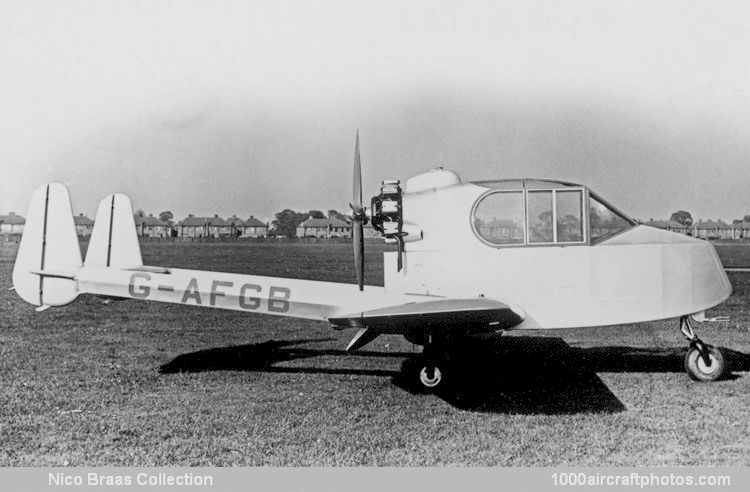After preliminary flight testing was completed the 68 hp radial engine was replace by a much stronger 90 hp in-line engine with a newly designed nacelle in late 1938, whereafter the type was referred to as the Arpin A-1 Mk.II. In expectation of series production the company was renamed Arpin Aircraft Manufacturing Co. Ltd. on May 26, 1939, however, with the start of WW II only three months later, series production never materialized. The sole Arpin was scrapped in 1941."
The following data relate to the A-1, data in square brackets relate to the A-1 Mk.II.
Type: Two-seat light cabin monoplane.
Wings: Low-wing cantilever monoplane. Clark "YH" wing section. Wing in three sections, a center section built integral with the nacelle and two tapering outer sections. Single "I"-spar with spruce flanges and plywood web, false spars fore and aft, spruce and plywood former ribs and plywood covering. Ailerons on outer sections, with split trailing edge flaps between ailerons.
Nacelle: Spruce and plywood-covered structure, built integral with the wing center section.
Tail unit: Monoplane type, with twin fins and rudders carried on two diamond-section booms springing from the extremities of the center section. Tail booms bolted directly to the center section spar. Booms have spruce longitudinals and spruce walls and diaphragms. Tail structure of wood with plywood covering.
Landing gear: Three-wheeled Maclaren type. Consists of two cantilever Dowty oleo legs mounted at the extremities of the center section and aft of the center of gravity, and one similar unit below the nose of the nacelle. The back wheels are coupled together and can be turned in unison by the pilot. The front wheel castors but has an overriding steering control.
Power plant: A 68 hp British Salmson AD.9R nine-cylinder radial air-cooled geared engine [90 hp four-cylinder air-cooled inverted in-line engine] on a welded steel-tube mounting and driving a four-blade pusher airscrew. Two cylindrical fuel tanks in the center section aft of the main spar, one on each side of the fuselage.
Accommodation: Enclosed cabin, seating two side-by-side. Baggage compartment in nose.
